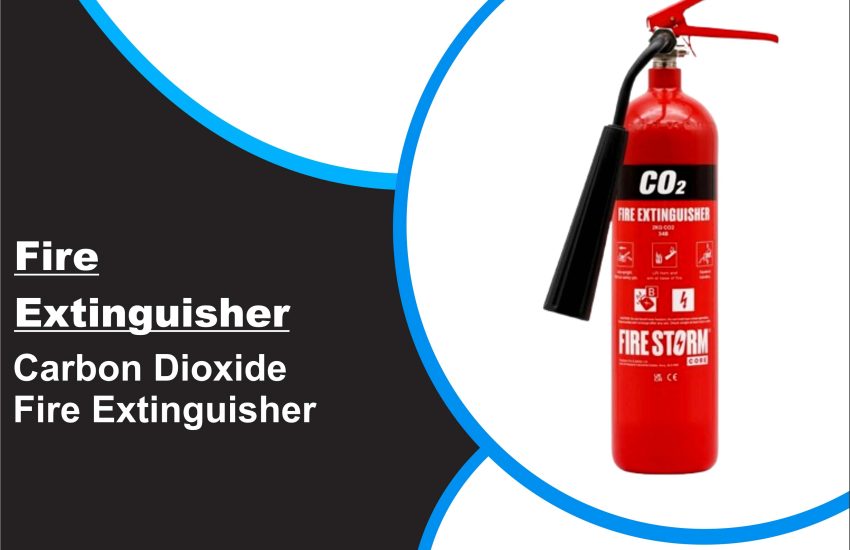Carbon Dioxide Fire Extinguisher often called a CO2 fire extinguisher—plays a crucial role in fire safety equipment. Businesses, offices, and industrial facilities rely on it to handle Class B and electrical fires effectively. Unlike foam or powder extinguishers, it leaves no residue, making it ideal for sensitive environments.
How CO2 Fire Extinguishers Work
These extinguishers use compressed carbon dioxide gas to smother flames. When activated, the extinguisher releases a white, cold cloud of CO2 that pushes oxygen away from the fire source. Since oxygen supports combustion, the fire dies out quickly.
Moreover, the rapid expansion of CO2 cools the surrounding air, which further reduces the fire’s intensity. Technicians often prefer CO2 extinguishers in situations involving electrical components because they don’t cause damage to equipment.
CO2 Fire Extinguisher Uses
You can use CO2 fire extinguishers for:
- Electrical fires such as servers, switchboards, and machinery
- Flammable liquids like petrol, oil, and solvents
However, avoid using them on Class A fires (wood, paper, cloth), as they do not prevent re-ignition. For those fire types, a water or foam extinguisher works better.
In addition, CO2 extinguishers perform best in indoor areas where ventilation allows for the safe dissipation of gas.
Where to Place CO2 Fire Extinguishers
To enhance safety, place these extinguishers in high-risk zones such as:
- Data centers
- Electrical rooms
- Commercial kitchens
- Printing areas
- Laboratories
Make sure all team members know how to identify and operate a CO2 extinguisher. Clear signage and routine training can significantly improve emergency readiness.
Safety Tips for Using CO2 Fire Extinguishers
Always handle CO2 fire extinguishers with care. Here are some essential safety guidelines:
- Hold the insulated handle—never touch the nozzle directly, as it can freeze your skin.
- Ensure the area is ventilated before use to prevent oxygen depletion.
- Stand 1.5 to 2 meters away and aim at the base of the fire using a sweeping motion.
- Release the trigger once the flames subside and monitor the area for re-ignition.
These steps not only improve the extinguisher’s effectiveness but also reduce personal risk.
Maintenance and Inspection
You should inspect and maintain CO2 extinguishers regularly to keep them in working condition. Certified professionals check pressure levels, inspect the hose and nozzle, and ensure proper wall mounting.
Furthermore, schedule annual servicing to comply with fire safety regulations and manufacturer guidelines. Ignoring routine maintenance can result in malfunction during critical moments.
Conclusion
In summary, a carbon dioxide fire extinguisher is a clean, fast, and effective solution for dealing with electrical and flammable liquid fires. While it doesn’t work on all fire types, it remains a must-have in offices, server rooms, and industrial settings.
Therefore, knowing when and how to use a CO2 fire extinguisher—and keeping it maintained—can make a life-saving difference.


